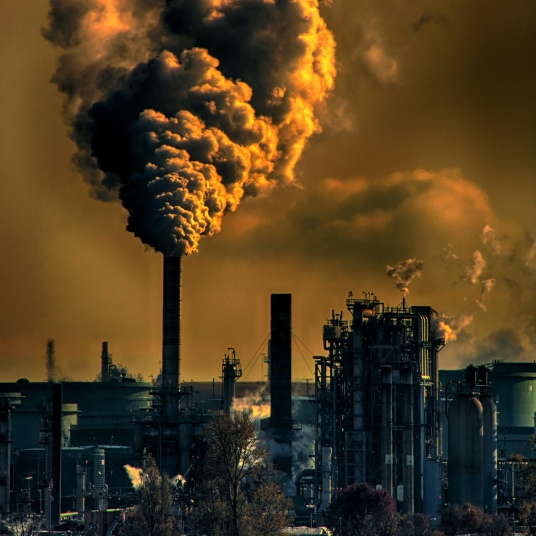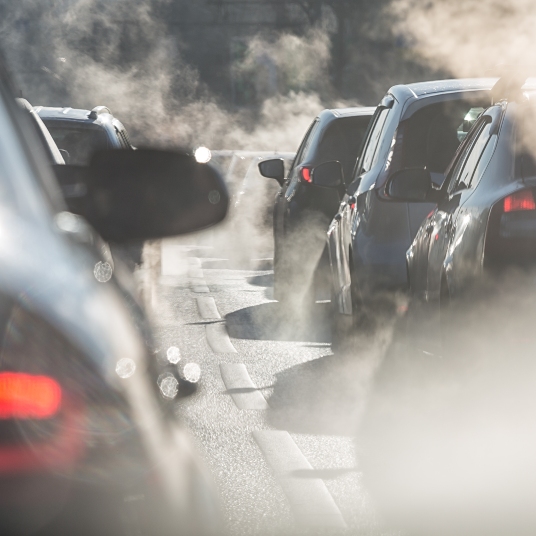What will I read in this article?
- Air pollution and climate change have a common origin
- The increasingly severe consequences of air pollution and climate change
- World Health Organisation recommendations
- Energy transition as a common solution
Two of the planet's main environmental problems, climate change and air pollution, are very closely linked. Ambos son provocados por la acción humana y ambos tienen consecuencias fatídicas para la salud de las personas.
In fact, a new report by the World Health Organisation (WHO) warns that air pollution causes 7 million premature deaths a year worldwide. The report reviews the levels of pollution it previously considered dangerous and now includes others previously classed as safe. One of its conclusions is that all capitals in the European Union are above the annual threshold that the WHO has marked as safe for nitrogen dioxide, one of the main pollutants.
But let's not get ahead of ourselves. We will go into this report in more detail later. Before, let's talk about why climate change and air pollution are not the same and results are the nuances that differentiate them.
Firstly, climate change is the global variation of the Earth's climate due to natural causes and human activity. Global warming is accelerated by greenhouse gases caused by human activity. The main greenhouse gases are carbon dioxide (CO₂), methane (CH₄) and nitrous oxide (N₂O). Although CO₂ is the main gas contributing to climate change, it is not harmful to human health.
All EU capitals exceed the annual threshold that the WHO has marked as safe for nitrogen dioxide.
Climate change has many consequences with global impact, mainly due to changes in climate patterns, the rising sea level and more extreme meteorological phenomena. Climate change is not only an environmental phenomenon, its negative impacts have social and economic consequences, too.
 For its part, air pollutionis the presence, in the air, of substances or particles that imply danger, damage or disturbance for humans, flora or fauna. The main sources of atmospheric contamination are tropospheric ozone gases (O3), sulfur oxides (SO2and SO3), nitrogen oxides (NO and NO2), benzo(a)pyrene (BaP) and particulate matter (PM). These gases result mainly from emissions caused by the burning of fossil fuels (including emissions generated by transport), industrial processes, burning of forests, aerosol use, and radiation.
For its part, air pollutionis the presence, in the air, of substances or particles that imply danger, damage or disturbance for humans, flora or fauna. The main sources of atmospheric contamination are tropospheric ozone gases (O3), sulfur oxides (SO2and SO3), nitrogen oxides (NO and NO2), benzo(a)pyrene (BaP) and particulate matter (PM). These gases result mainly from emissions caused by the burning of fossil fuels (including emissions generated by transport), industrial processes, burning of forests, aerosol use, and radiation.
Road traffic is one of the most significant sources of both greenhouse gases and air pollution.
Air pollution and climate change have a common origin
Both problems are a result of the same context: the current energy model. Both climate change and air pollution are worsened by the burning of fuel, increasing the CO2 emissions which cause global warming. Meanwhile, the generation of other pollutants, such as nitrogen oxides (NO and NO2), sulfur oxides (SO2and SO3) and particulate matter, is the main reason the air is contaminated.
"Both climate change and air pollution are driven by burning fossil fuels”
The increasingly severe consequences of air pollution and climate change
Another shared feature of both phenomena is their serious impact on society. Climate change causes droughts, floods, deforestation, displacement and disappearance of animal and plant species... leading to famine and disease.
Air pollution has serious effects on health and causes 7 million deaths every year worldwide and causes a quarter of lung cancers, heart attacks and strokes, representing 0.3 of the world's GDP in health expenditures, in addition to the reduction of labor efficiency.
In fact, there are more and more studies that link new diseases with air pollution, such as osteoporosis, and it is already known that this triggers diseases such as infections or kidney failure. In other words, its effects on health go far beyond respiratory or heart diseases. According to a report by the EU Court of Auditors, the number of victims is more than 10 times higher than the number of deaths from traffic accidents.
On this website you can check air quality data in any city in the world in real time.
Air pollution and climate change tend to get worse. The aforementioned impacts will be increasingly strong, which means that if the energy model is not changed, the effects will be more devastating, both for the planet and for people's health: CO2 is cumulative and can last at least one hundred years in the atmosphere; the global level of air pollution, meanwhile, could multiply by five in the course of the next half century if it is not remedied.
World Health Organisation recommendations
 The WHO published an update of its air quality guidelines, a document that establishes non-binding standards for safe air pollution levels for countries around the world.
The WHO published an update of its air quality guidelines, a document that establishes non-binding standards for safe air pollution levels for countries around the world.
Having not been modified since 2005, the new text states that air pollution, together with climate change, is one of the greatest environmental threats to human health. The new report says that exposure to air pollutants causes 7 million premature deaths every year and confirms that children are the worst affected.
The new recommendations, which are much stricter than the previous recommendations, include the following:
- Average annual levels of particles smaller than 2.5 microns should not exceed 5 μg/m3. These small particles are responsible for cardiovascular and respiratory diseases and cancer.
- The maximum level of nitrogen dioxide (NO2) should be 10 μg/m3.
- Ozone reference values in peak periods should not exceed 60 μg/m3.
- Maximum values for PM10, sulphur dioxide (SO2) and carbon monoxide (CO) have been updated.
The WHO explains that it used “the abundant scientific evidence currently available” on the effects of pollutants on human health as the basis of the new guidelines.
“Exposure to air pollutants causes 7 million premature deaths every year”
Energy transition as a common solution
The final comparison we can make between climate change and air pollution is the most hopeful: both share a common solution, the introduction of a more sustainable energy model. Energy efficiency, more renewable energy, the use of electric vehicles, less resource consumption, application of measures from the Paris Agreement… will ultimately serve to reduce the polluting emissions that raise the temperature of the planet and make the atmosphere such a polluted environment.
The new limits imposed by the WHO reflect experts' broad agreement on the impact of air pollution on health. But it is just a wake-up call for those who can truly implement the measures needed to save the health of people and the planet.
Fuente: El Confidencial, stadista, El País , Climática